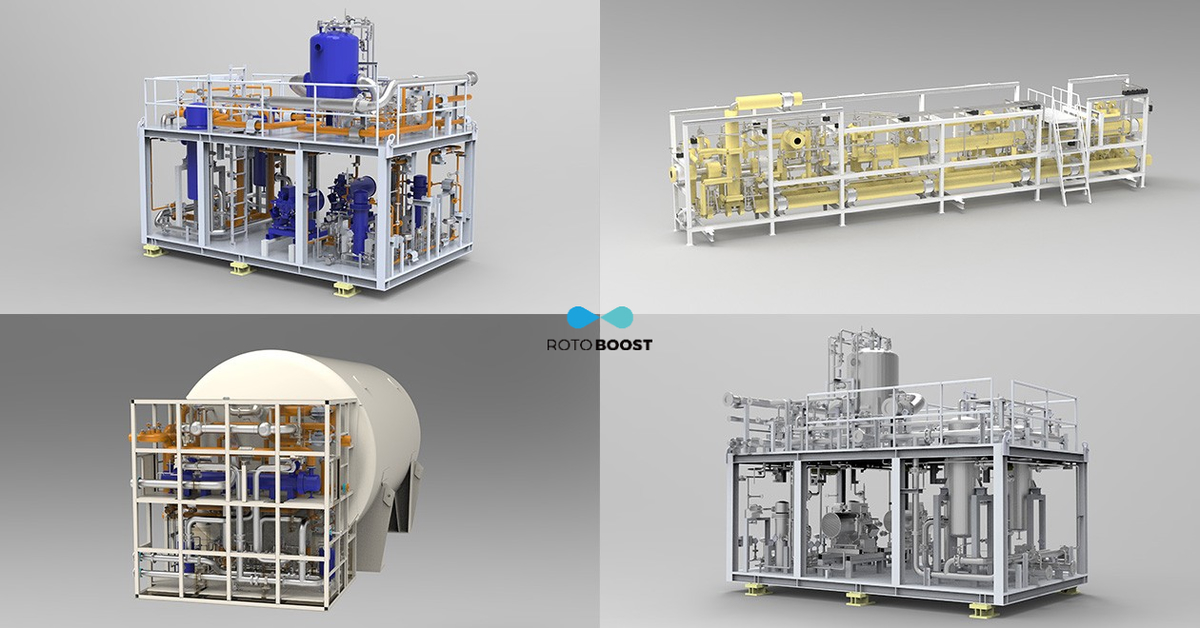Rotoboost’s pioneer carbon capture concept receives ABS backing
Classification society ABS has issued a "new technology qualification" to Norwegian hydrogen supplier Rotoboost’s concept of an onboard pre-combustion carbon capture system.

PHOTO: Designs of Rotoboost's marine hydrogen production system. Rotoboost
The US Department of Energy (DoE) defines pre-combustion carbon capture as the process of removing carbon dioxide (CO2) from fossil fuels before combustion is completed.
The DoE has described pre-combustion capture as the “most efficient” carbon removal technology since it has a high concentration of CO2 - between 15-20% - at a higher pressure, which allows for easier removal before the hydrogen is combusted.
Rotoboost's concept converts liquified natural gas (LNG) into hydrogen and solid carbon over a liquid catalyst using heat - the process is also known as thermocatalytic decomposition.
The resulting hydrogen can then be used as a drop-in fuel with LNG to reduce methane slip in combustion engines or directly in hydrogen fuel cells, according to Rotoboost. It also claims that there is no need to store large amounts of hydrogen onboard.
“The thermocatalytic decomposition of methane is an intelligent method for capturing and storing carbon onboard gas-fueled vessels”, says Georgios Plevrakis, ABS vice president-global sustainability. “By using this method, solid carbon can be reused to produce fuel cells and batteries”.
By Konica Bhatt
Please get in touch with comments or additional info to news@engine.online





